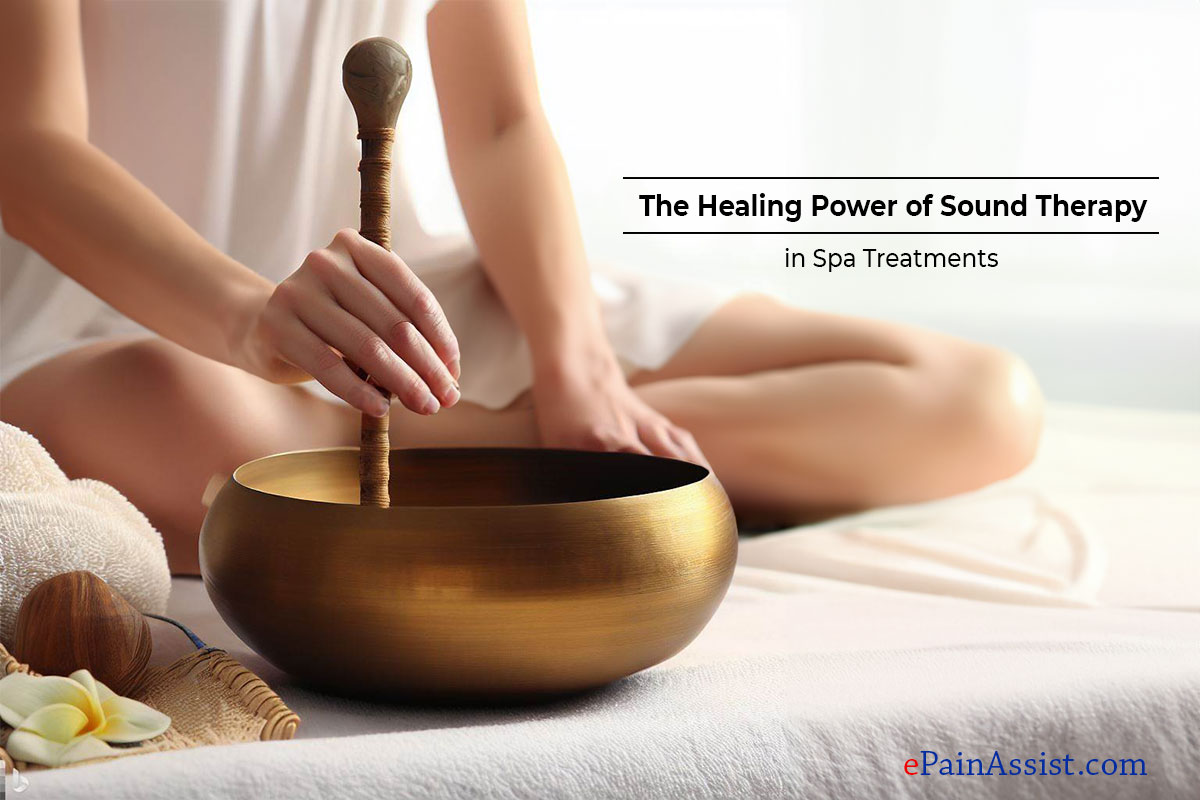In the pursuit of relaxation and rejuvenation, spa treatments have long been sought after for their ability to provide a holistic approach to wellness. One increasingly popular technique gaining recognition within the spa industry is sound therapy. By harnessing the healing power of vibrational frequencies, sound therapy offers a unique and immersive experience that promotes relaxation, balance, and overall well-being. In this article, we will explore the benefits of sound therapy in spa treatments, shedding light on its therapeutic effects and the science behind vibrational frequencies.

Understanding Sound Therapy:
Sound therapy, also known as sound healing or vibrational therapy, is an ancient practice that utilizes sound and vibrations to promote physical, mental, and emotional well-being. It is based on the belief that everything in the universe, including our bodies, is in a constant state of vibration. When the body’s natural vibrations become imbalanced or disrupted, it can lead to physical and emotional discomfort. Sound therapy aims to restore harmony and balance by using specific frequencies and tones to resonate with the body’s natural vibrations.
Harnessing Vibrational Frequencies:
Different sounds and frequencies have unique effects on our bodies and minds. Sound therapy often incorporates various instruments and techniques to create a symphony of healing vibrations. Here are some commonly used tools in sound therapy:
- Singing Bowls: These ancient Tibetan bowls produce rich, resonant tones when struck or played with a mallet. The vibrations and harmonics emitted by singing bowls help to induce a deep state of relaxation and release energetic blockages.
- Tuning Forks: Tuning forks are precisely calibrated metal instruments that produce specific frequencies when struck. By placing the forks on or near specific areas of the body, practitioners can help restore balance and harmony to those areas.
- Gongs: The deep, resonant tones of gongs produce a wide range of frequencies that can create a meditative and transformative experience. Gong baths, where participants lie down and immerse themselves in the soothing vibrations, are popular in sound therapy sessions.
Benefits of Sound Therapy in Spa Treatments:
- Stress Reduction: Sound therapy has a profound calming effect on the nervous system, promoting deep relaxation and reducing stress and anxiety levels. The soothing sounds and vibrations help release tension and induce a state of tranquility.
- Pain Relief: Vibrational frequencies generated during sound therapy sessions can stimulate the body’s natural healing mechanisms, helping to alleviate physical pain and discomfort. This can be particularly beneficial for those suffering from chronic pain conditions.
- Improved Sleep Quality: Sound therapy has been shown to enhance sleep quality by promoting relaxation and reducing insomnia symptoms. The gentle sounds and vibrations help to quiet the mind and create an optimal environment for restful sleep.
- Emotional Healing: Sound therapy can aid in emotional release and healing by creating a safe space for self-reflection and introspection. The vibrations can help release stagnant emotions and promote a sense of inner peace and well-being.
- Enhanced Mind-Body Connection: Sound therapy can deepen the connection between the mind and body, fostering a sense of mindfulness and awareness. This can contribute to improved self-awareness, self-expression, and overall mental clarity.
Incorporating Sound Therapy into Spa Treatments:
Spas are increasingly incorporating sound therapy into their treatment offerings to enhance the overall spa experience. From dedicated sound therapy sessions to incorporating sound elements in massage and meditation treatments, there are various ways to integrate this healing modality into a spa environment. Sound therapy can be tailored to individual needs and preferences, providing a personalized and transformative experience for spa-goers.
Conclusion:
Sound therapy is a powerful and effective healing modality that harnesses the healing power of vibrational frequencies. By utilizing sound and vibrations, this ancient practice offers numerous benefits, including stress reduction, pain relief, improved sleep quality, emotional healing, and enhanced mind-body connection. With its increasing popularity, sound therapy is finding its rightful place in the spa industry, providing a unique and immersive experience for individuals seeking relaxation, balance, and rejuvenation. Incorporating sound therapy into spa treatments can elevate the overall spa experience, offering guests a holistic and transformative journey towards well-being.
- Hamer, R., & Copeland, J. (2019). Sound therapy for the treatment of stress and anxiety: A systematic review. The Journal of Alternative and Complementary Medicine, 25(4), 396-413. DOI: 10.1089/acm.2018.0270
- Bhatia, A., & Mohan, R. (2021). The effects of sound therapy on pain and stress management: A narrative review. International Journal of Complementary & Alternative Medicine, 13(1), 61-65.
- Kafami, M., Aghamiri, Z., & Shahabi, Z. (2020). The effects of sound therapy on sleep quality in individuals with insomnia: A systematic review and meta-analysis. Complementary Therapies in Medicine, 48, 102288. DOI: 10.1016/j.ctim.2019.102288
- Gong, H., Ni, C., Shen, X., Wu, T., & Jiang, C. (2020). Sound therapy interventions for mental disorders: A systematic review and meta-analysis of randomized controlled trials. Complementary Therapies in Medicine, 49, 102339. DOI: 10.1016/j.ctim.2020.102339
- Lee, J., Park, B., & Tsunetsugu, Y. (2019). Sound environment for healing: Controlling reverberation time in spa therapy. International Journal of Environmental Research and Public Health, 16(17), 3165. DOI: 10.3390/ijerph16173165
